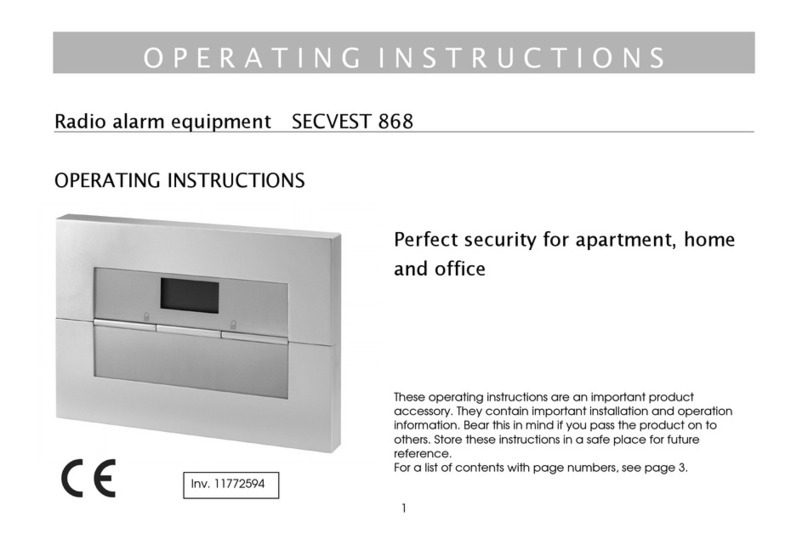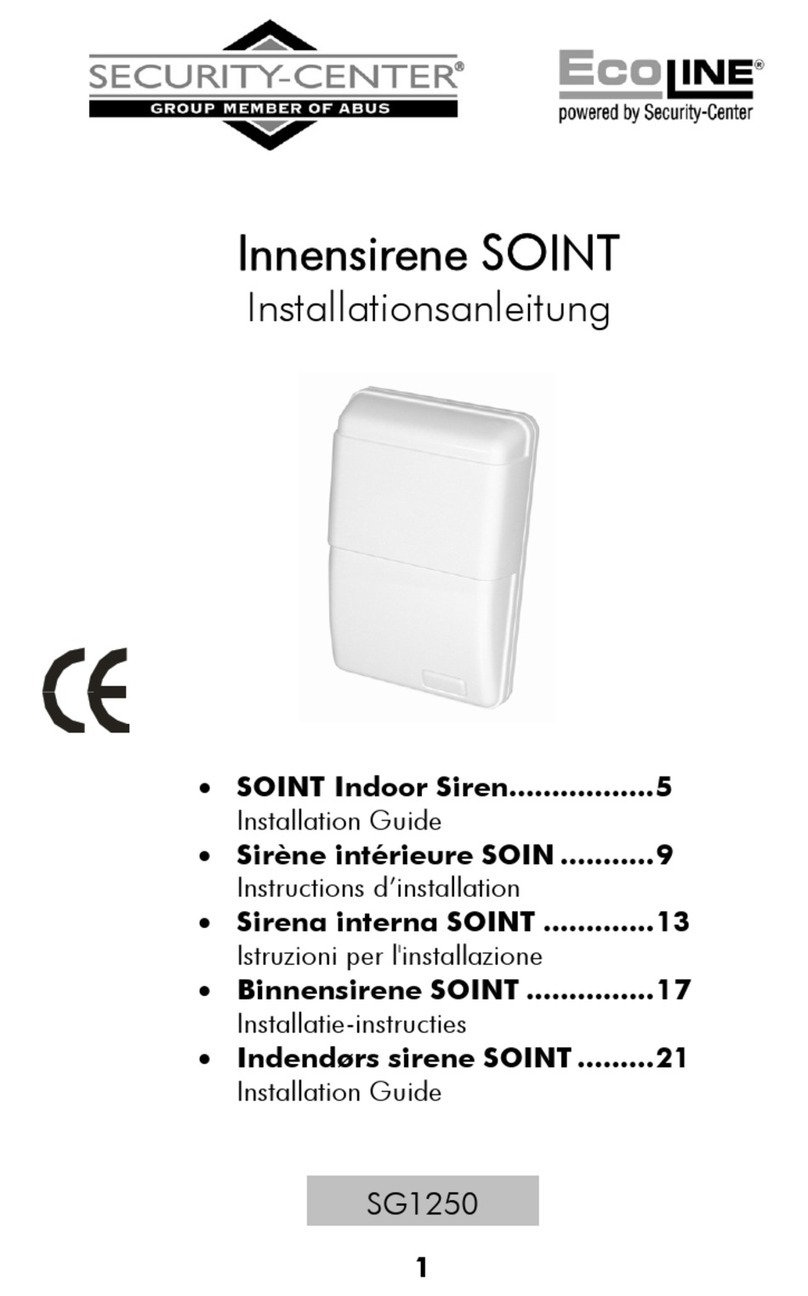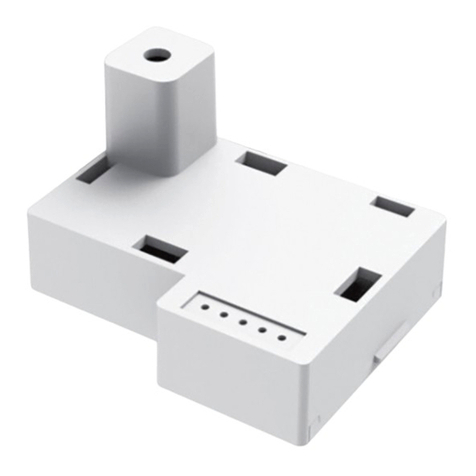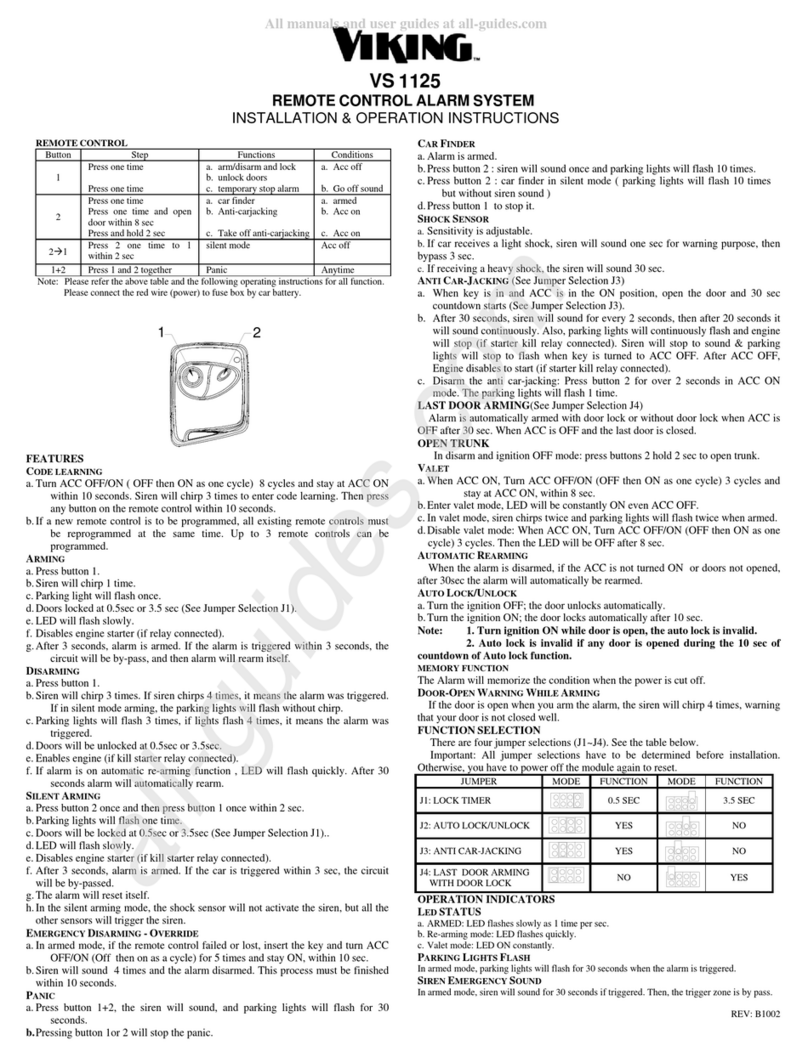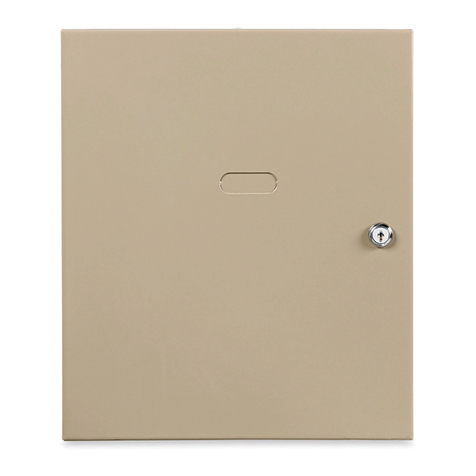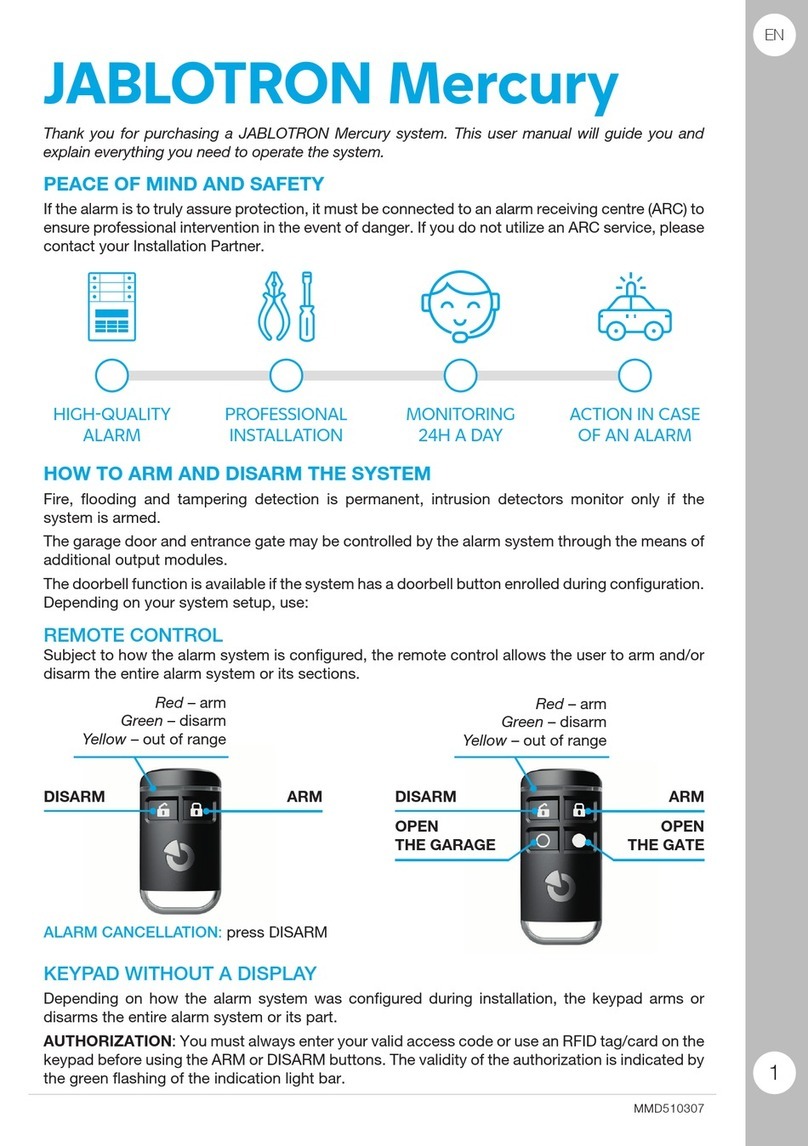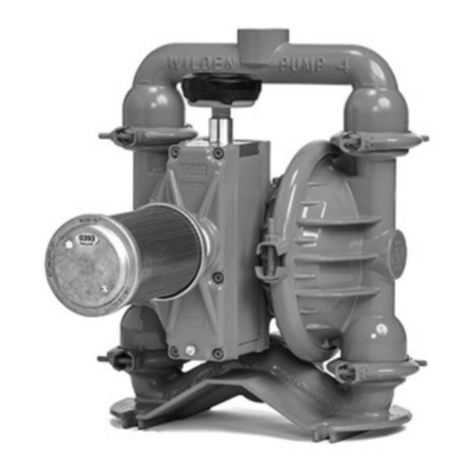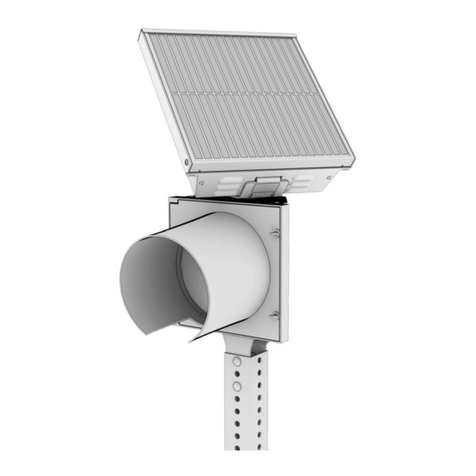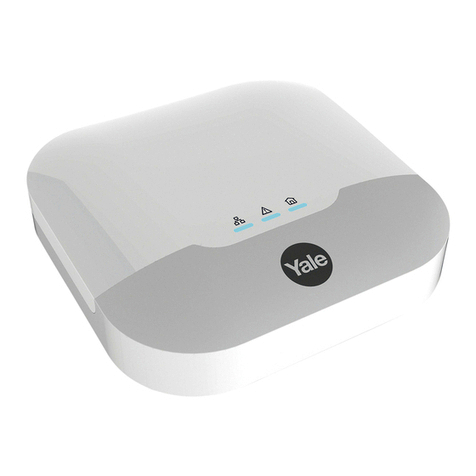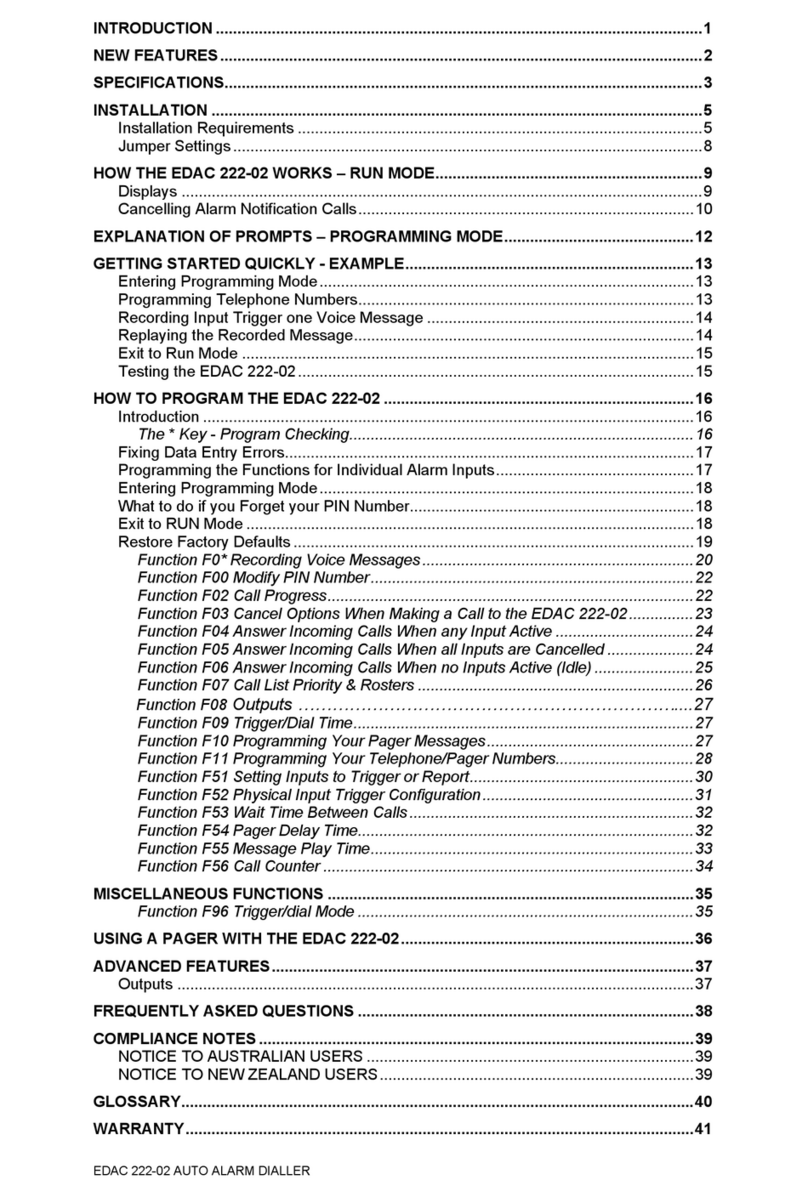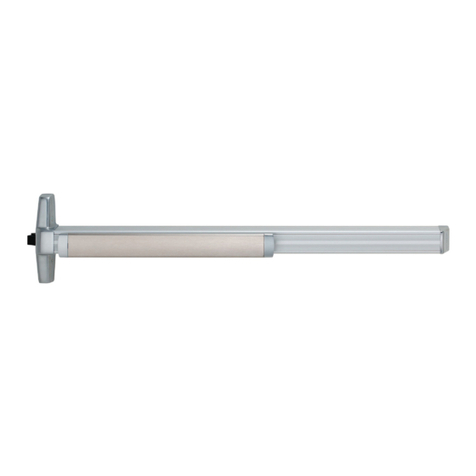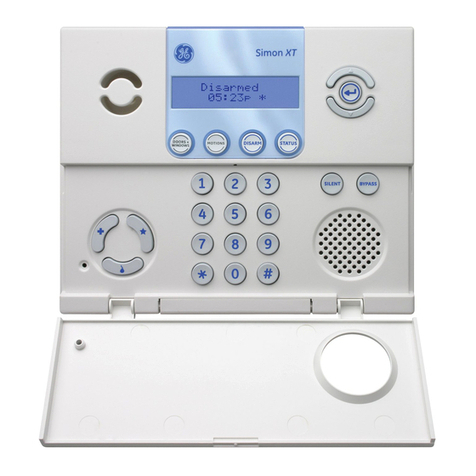Security-Center FU2938 User manual

1
FU2938
Kompaktalarmierung
INSTALLATIONSANLEITUNG
Kompaktalarmierung
Installationsanleitung (D) ......................................... 1
Compact Alarm
Installation Guide (UK)........................................... 12
Système d’alarme compact
Instructions d’installation (F) .................................. 23
Sistema di allarme compatto
Istruzioni per l'installazione (I)................................ 34
Compacte Sirene + Flitser
Installatieaanwijzingen (NL) ................................... 45
Kompaktalarmering
Installations Guide (DK) ......................................... 56

2
Hinweise
Um eine Manipulation der Kompaktalarmierung zu vermeiden, sollte das
Produkt außerhalb des Handbereiches (mindestens 3 Meter Montagehöhe)
montiert werden.
Bitte beachten Sie außerdem die lokalen gesetzlichen Bestimmungen. In
einigen europäischen Ländern ist der Einsatz von Sirenen im
Außenbereich verboten oder die maximale Alarmdauer ist reduziert. Im
Zweifelsfall informieren Sie sich bei Ihren lokalen Behörden.
Durch unsachgemäße oder unsaubere Installationsarbeiten kann es zu
Störungen oder Fehlfunktionen kommen. Lesen Sie sich daher diese
Anleitung genau durch. Berücksichtigen Sie die Angaben zur Schutzart und
achten Sie bei der Installation der Anlage auf die genaue Bezeichnung der
verwendeten Leitungen und Komponenten.
Hauptmerkmale
•mikroprozessorgesteuerte Kompaktalarmierung (Sirene mit Blitzlicht)
•geeignet für Innen- und Außenmontage
•stabiles wetterfestes Gehäuse
•Innen- und Außengehäuse aus verzinktem und lackiertem Stahlblech
•Schutz gegen Sabotage, Abriss, Zerstörung der Blitzleuchte und
Kabelbeschädigung
•Alarmdauer der Sirene 3min
•optionaler 12V / 1200mAh Akku
•extrem Lautstark 118dB(A) @ 1m
•in zwei Varianten nutzbar (als Standard- oder als Funkausführung)

3
Beschreibung des Aufbaus
1 Bohrlöcher für Wandbefestigung
2 Kabelzuführung
3 Xenonblitz
4 Piezosirenen
5 Platz für Akku
6 Sabotagekontakt Deckel
7 Sabotagekontakt Wand
8 Diagnose LED 1
9 Diagnose LED 2
10 Diagnose LED 3 Akku
11 Diagnose LED 4 Akkuladung
12 Jumper für Diagnose LED’s
Wahlschalter
zur
Ansteuerung
der Sirene
Steuersign
al
Sirene
Steuersign

4
Aktivierungsmethode
Die Aktivierung der Kompaktalarmierung erfolgt wahlweise:
1. durch ein negatives Eingangssignal (0V DC) an [Strob Trig], bzw.
[Siren Trig]
oder durch Ansteuerung über den RJ11 Stecker
2. durch eine interne Sabotage
3. durch eine externe Sabotage (Kabeldurchtrennung)
Sabotagemodus
Die Kompaktalarmierung erkennt zwei Sabotagearten und aktiviert die
Alarmierung automatisch.
Interner Sabotagekontakt
Wird der interne Sabotagekontakt ausgelöst (Öffnen des Deckels, Abriss
von der Wand), aktiviert die Kompaktalarmierung automatisch den Alarm
über Blitz und Sirene. Der Sabotagealarm wird gleichzeitig am
Sabotageausgang ausgegeben. Beim Rücksetzen des Sabotagekontakts
wird auch der Alarm gestoppt. Bei der Funkvariante wird das
Sabotagesignal über das Funk-Universalmodul an die Alarmzentrale
geschickt.
Durchtrennen der Kabelzuführung
Beim Durchtrennen der Kabelzuführung werden Sirene und Blitz nach 6
Stunden für 30s aktiviert. In der Funkvariante wird die Sabotage über das
Funk-Universalmodul an die Alarmzentrale gemeldet.
Signalisierung
Die Kompaktalarmierung signalisiert je nach ausgelöstem Alarmeingang
über Sirene und/oder Blitz. Nach einer Stunde reduziert die
Kompaktalarmierung die Blitzfrequenz von 1Hz auf 1/8Hz.
Bei Ausfall der Versorgungsspannung werden automatisch Sirene und Blitz
nach 6 Stunden für 30s aktiviert.
Alarmdauer
Die Alarmierung endet immer, wenn der Alarmgrund nicht mehr vorliegt
und somit die Eingänge nicht mehr angesteuert werden.
Bei anliegendem Steuersignal wird die Sirene jedoch nach Ablauf der
maximalen Alarmzeit (3 Minuten) gestoppt.
Das Blitzlicht wird erst mit dem Rücksetzen des Alarms beendet.

5
Installation der Kompaktalarmierung (Funk- und Standard-Variante)
1. Nehmen Sie die Kompaktalarmierung aus der Verpackung. Öffnen Sie
das Außengehäuse und zeichnen Sie die vier Bohrlöcher für die
Wandbefestigung sowie ein Bohrloch für die Kabelzuführung an.
2. Bohren Sie die entsprechenden Bohrlöcher und das Loch für die
Kabelzuführung.
3. Führen Sie nun von hinten das Kabel durch die Kabelöffnung in die
Kompaktalarmierung.
4. Schrauben Sie die Kompaktalarmierung an die Wand.
5. Achten Sie beim Festschrauben darauf, dass der rückseitige
Sabotagekontakt eingedrückt ist.
6. Verbinden Sie nun die Leitungen des Anschlusskabels mit den
Anschlussklemmen (Drahtvariante) wie in der Anschlussübersicht
beschrieben, bzw. stecken Sie den RJ-11 Stecker (Funkvariante) ein.
7. Optional können Sie zwischen
[+12V DC] und [Siren Trig],
sowie zwischen[+12 DC] und [Strobe Trig]
jeweils einen Widerstand 1kOhm schalten, um im Ruhezustand ein
definiertes Potential an den Steuereingängen zu erhalten. Diese
Beschaltung reduziert Störeinflüsse auf der Zuleitung und hilft somit
unbeabsichtigtes Auslösen der Alarmierung zu vermeiden.
8. Verbinden Sie den Akku mit den entsprechenden Klemmen. Es ertönt
ein kurzer Signalton.
9. Setzen Sie den Jumper (14), je nach Position der Steckbrücke sind die
Diagnose-LED’s aktiv oder deaktiv, und schließen Sie das Gehäuse.
Anmerkung:
Beim Schließen des Gehäusedeckels ertönt ein langer Ton. Danach führt
die Kompaktalarmierung einen Selbsttest durch. Beim erfolgreichen
Abschluss des Tests beginnen die LED’s wechselseitig zu blinken. Ein
Öffnen des Gehäuses führt nun zu einem Sabotagealarm.

6
Verdrahtung der Kompaktalarmierung FU2938 (Standard)
Anschluss des Akkus
Im Auslieferungszustand ist der Akku nicht angeschlossen. Befestigen Sie
die schwarze Leitung am Minuspol des Akkus und die rote Leitung am
Pluspol des Akkus.
Anschluss der Versorgungsspannung
Verbinden Sie die Eingänge [+12V] und [GND] mit der
12V DC Spannungsversorgung.
Anschluss von Sirene und Blitz
1. Sirene und Blitz werden jeweils durch das Anlegen eines 0V
Massepotentials aktiviert.
2. Für die Ansteuerung des Blitzes verbinden Sie den Eingang [Strobe
Trig] mit einem Ausgang Ihrer Alarmzentrale. Da der Blitz über das
Anlegen eines Massepotentials aktiviert wird, können Sie den Blitz auch
über einen Transistorausgang Ihrer Alarmzentrale ansteuern, der im
Alarmfall auf 0V schaltet.
3. Für die Ansteuerung der Sirene verbinden Sie den Eingang [Siren Trig]
mit einem Ausgang Ihrer Alarmzentrale. Da die Sirene über das
Anlegen eines Massepotentials aktiviert wird, können Sie die Sirene
auch über einen Transistorausgang Ihrer Alarmzentrale ansteuern, der
im Alarmfall auf 0V schaltet.
4. Anmerkung: Da die Kompaktalarmierung über eine automatische
Abschaltung der akustischen Alarmierung verfügt, können [Strob Trig]
und [Siren Trig] auch über einen Ausgang der Alarmzentrale
angesteuert werden.
Visuelle Scharfschaltquittierung
Um eine optische Signalisierung der Scharfschaltung zu ermöglichen wird
der Blitz 3 – 5 mal aktiviert, wenn der Ausgang Ihrer Alarmzentrale die
Eigenschaft „Aktiv Quittierung“ besitzt.
Anschluss des Sabotageausgangs der Kompaktalarmierung
Verbinden Sie den Ausgang [Tamper] mit der Sabotagelinie Ihrer
Alarmzentrale.
Anschluss des Akkustörungsausgangs der Kompaktalarmierung
Verbinden Sie den Ausgang [BATT] mit einer Zone Ihrer Alarmzentrale.
Anmerkung
Verwenden Sie ausschließlich abgeschirmte und geerdete Leitungen
(AZ6360 oder AZ6361).

7
Verdrahtung der Kompaktalarmierung FU2938 (Funkvariante)
1. Führen Sie das Anschlusskabel vom Funk-Universalmodul mit dem RJ-
11 Stecker rückseitig in das Gehäuse ein.
2. Stecken Sie den RJ-11 Stecker in die auf der Hauptplatine vorgesehene
Buchse.
3. Setzen Sie den Jumper (14), je nach Position der Steckbrücke sind
die Diagnose-LED’s aktiv oder deaktiv.
4. Weitere Einstellungen sind nicht vorzunehmen.

8
Beschreibung der Anschlüsse
Steuersign
al
Sirene
Steuersign
al

9
Anschlussübersicht FU2938 (Standard)
Battery + Rote Leitung zum Akku
Battery - Schwarze Leitung zum Akku
Klemmleiste
+12V (1) +12V DC Spannungsversorgung
GND (2) 0V DC Spannungsversorgung
Strobe Trig (3) Blitzansteuerung (mit 0V DC im Alarmfall)
Siren Trig (4) Sirenenansteuerung (mit 0V DC im Alarmfall)
Tamper NC/NO (5/6) Sabotage-Relaisausgang
potentialfrei
NC=Normalzustand
NO= Sabotage
Batt NC/NO (7/8) Akkustörungs-Relaisausgang potentialfrei
NC=Normalzustand
NO= Akkustörung
Anschlussübersicht FU2938 (Funkvariante)
Battery + Rote Leitung zum Akku
Battery - Schwarze Leitung zum Akku
RJ-11 Buchse
PIN 1 Akkustörungs-Transistorausgang
+12V = Normalzustand
0V = kein Akku angeschlossen oder
Akkufehler
PIN 2 +12V DC Spannungsversorgung
(wird die Spg.-versorgung nicht innerhalb von 6h
wiederhergestellt, werden Sirene + Blitz für 30s
aktiviert)
PIN 3 0V DC Spannungsversorgung
PIN 4 Sabotage-Transistorausgang
0V = Normalzustand
offen / hochohmig = Sabotage
PIN 5 Blitzansteuerung 0V DC im Alarmfall
(Blitz ist aktiv solange 0V DC Signal anliegt)
PIN 6 Sirenenansteuerung 0V im Alarmfall (Sirene ist aktiv
solange 0V DC Signal anliegt, aber nur für max. 3
min)
Verbundene Anschlüsse von Klemmleiste und RJ-11 Buchse
Klemmleiste RJ-11 Buchse
1 PIN 2
2 PIN 3
3 PIN 5
4 PIN 6

10
Fehlersuche
LED Anzeige Bedeutung Lösung
LED’s blinken
abwechselnd
einmal pro
Sekunde
Normaler
Betriebsmodus
LED 1 blinkt
einmal pro
Sekunde
Sabotage, eine oder
beide
Sabotagekontakte
offen
Überprüfen Sie die Montage
LED 2 blinkt
einmal pro
Sekunde
Keine
Betriebsspannung
angelegt
Überprüfen Sie die Verdrahtung
und die Funktion der
Betriebsspannungsversorgung
Rote LED 3
auf der
Hauptplatine
leuchtet nicht
1) Akku defekt
2) Kein Akku
angeschlossen
1) Überprüfen Sie die
Akkuspannung und Verdrahtung
des Akkus
Rote LED 4
auf der
Hauptplatine
leuchtet nicht
1) Akku wird nicht
geladen
2) Akku geladen
1) Kontrollieren Sie die Höhe der
Betriebsspannung (13,5V)
2) Überprüfen Sie die
Akkuspannung

11
Technische Daten
Spannungsversorgung 12V DC nominal
Notstromversorgt optional
Empfohlener Akku 12V, 1200mAh, BT2012, SLA
Typ
Stromaufnahme Standby 50mA
Maximale Stromaufnahme 430mA
(Sirene 350mA, Blitz 80mA)
Sabotageüberwacht Wand-Deckelkontakt und
Kabel
Sirene 118dB (A) @ 1m
Blitz Xenon-Blitzleuchte
Max. Alarmdauer 3 min
Blitzzyklen 1 Blitz/s
1 Blitz/8s (nach 1h)
Schutzart IP34
Betriebstemperatur -25°C bis +55°C
Maße (HxBxT) 315 x 200 x 50 mm
Material Stahl, lackiert
Gehäusefarbe weiß
Gewicht (ohne Akku) 2.450g
Lieferumfang Kompaktalarmierung,
Installationsanleitung
Der Hersteller behält sich vor technische Änderungen ohne
Vorankündigung durchzuführen.

12
FU2938
Compact alarm system
INSTALLATION GUIDE
Kompaktalarmierung
Installationsanleitung (D) ......................................... 1
Compact Alarm
Installation Guide (UK)........................................... 12
Système d’alarme compact
Instructions d’installation (F) .................................. 23
Sistema di allarme compatto
Istruzioni per l'installazione (I)................................ 34
Compacte Sirene + Flitser
Installatieaanwijzingen (NL) ................................... 45
Kompaktalarmering
Installations Guide (DK) ......................................... 56

13
Notes
To prevent manipulation of the compact alarm, install the product out of
arm’s reach (at least 3 meters high).
Additionally, please take local legislation into consideration. In some
European countries, the use of sirens externally is forbidden, or the
maximum alarm duration is restricted. In case of doubt, ask your local
authorities for information.
Improper or careless installation work may lead to faults or malfunctioning.
You should therefore read these instructions carefully. Observe the
protection type specifications and follow the installation instructions for the
lines and components used precisely.
Main features
•Microprocessor-controlled compact alarm (siren with strobe light)
•Suitable for indoor and outdoor installation
•Stable, weatherproof casing
•Interior and exterior housing made of galvanised, painted steel
plate
•Protection again sabotage, unauthorised removal, destruction of
flashlight and cable damage
•Alarm duration of siren: 3 min.
•Optional 12V/1200mAh rechargeable battery
•Extremely loud: 118dB(A)@1m.
•Usable in two versions (standard or radio version).

14
Description of construction
1 Drill holes for wall fixing
2 Cable feed
3 Xenon strobe
4 Piezo sirens
5 Space for rechargeable battery
6 Tamper contact (cover)
7 Tamper contact (wall)
8 Diagnostics, LED 1
9 Diagnostics, LED 2
10 Diagnostics, LED 3, battery
11 Diagnostics, LED 4, battery charge
1
2
Jumper for diagnostic LEDs
Wahlschalter
zur
Ansteuerung
der Sirene
Steuersign
al
Sirene

15
Method of activation
The compact alarm system can be activated in different ways as follows:
1. By a negative input signal (0V DC) at [Strob Trig] or [Siren Trig]
or by a signal at the RJ11 plug
2. By internal tampering
3. By external tampering (cable severance)
Tamper mode
The compact alarm detects two types of tampering and activates the alarm
automatically.
Internal tampering contact
If the internal tampering contact is triggered (by opening the cover,
unauthorised removal from the wall), the compact alarm automatically
triggers the alarm via the strobe and the siren. The tampering alarm is
simultaneously issued at the tamper output. When the tamper contact is
reset, the alarm stops. In the radio version, the tamper signal is sent to the
alarm centre via the radio universal module.
Cable severance
If cables are severed, the siren and strobe are activated for 30 seconds
after 6 hours. In the radio version, the tampering is reported to the alarm
centre via the radio universal module.
Signalling
The compact alarm signals an alarm via the siren and/or the strobe light,
depending on the alarm input triggered. After one hour, the compact alarm
reduces the strobe frequency from 1Hz to 1/8Hz.
If the power supply fails, the siren and strobe are automatically activated for
30 seconds after 6 hours.
Alarm duration
The alarm always ends if the reasons for the alarm no longer exists and the
inputs are therefore no longer addressed.
However, if a control signal is received, the siren stops following expiry of
the maximum alarm time (3 minutes).
The strobe light does not switch off until the alarm is reset.

16
Installing the compact alarm (radio and standard versions)
1. Remove the compact alarm from the packaging. Open the external
casing and use it to mark the four drill holes for the wall fixings and
a hole for the cable feed.
2. Drill the holes accordingly and the hole for the supply cable.
3. Now pull the cable from behind through the cable hole into the
compact alarm.
4. Screw the compact alarm to the wall.
5. When tightening the screws, make sure that the rear sabotage
contact is correctly pressed into place.
6. Connect the individual wires of the connection cable to the clamps
(wired version) as described in the connector overview, or plug in
the RJ11 plug (radio version).
7. Optionally, you can insert a 1kOhm resistor between [+12V DC]
and [Siren Trig], as well as between [+12 DC] and [Strobe Trig] in
order to obtain a defined potential at the control inputs for the idle
state. This wiring method reduces disturbances to the feed lines,
thus helping to avoid accidental alarm triggering.
8. Connect the battery to the respective clamps. A short signal tone
sounds.
9. Set the jumper (14) to the right position for the diagnostic LEDs
(active or inactive), and close the casing.
Note:
When you close the casing lid, a long tone sounds. The compact alarm
then runs a self-test. If the self-test is successful, the LEDs start to flash
alternately. Opening the casing now triggers a tamper alarm.

17
Wiring of compact alarm FU2938 (Standard)
Battery connection
When delivered, the internal battery is not connected. Connect the black
lead to the minus pole of the battery and red lead to the plus pole of the
battery.
Connecting the power supply
Connect the [+12V] and [GND] inputs with the 12V DC voltage supply.
Connecting alarm siren + strobe
1. The siren and the strobe are each activated by the presence of a
0V ground potential.
2. To trigger the strobe, connect the [Strobe Trig] input with an output
of your alarm centre. Since the strobe is activated by connecting a
ground potential, you can also control the strobe via a transistor
output of your alarm centre that switches to 0V in case of an alarm.
3. To trigger the siren, connect the [Siren Trig] input with an output of
your alarm centre. Since the siren is activated by connecting a
ground potential, you can also control the siren via a transistor
output of your alarm centre that switches to 0V in case of an alarm.
4. Note: Since the compact alarm has an automatic deactivation of
the acoustic alarm, [Strob Trig] and [Siren Trig] can also be
addressed via an output of the alarm centre.
Visual set acknowledgement
To enable optical signalling of alarm setting, the strobe is activated 3–5
times if the output of your alarm centre has the “active acknowledgement”
property.
Connecting the tamper output of the compact alarm
Connect the [Tamper] output with the tamper line of your alarm centre.
Connecting the battery fault output of the compact alarm
Connect the [BATT] output with a zone of your alarm centre.
Remarks
Use only shielded and grounded cables (AZ6360 or AZ6361).

18
Wiring of compact alarm FU2938 (radio version)
1. Pull the connecting cable of the radio universal model with the RJ-11
plug through the back of the casing.
2. Insert the RJ-11 plug into the socket provided on the main board.
3. Set the jumper (14) to the right position for the diagnostic LEDs (active
or inactive).
4. No other settings are required.

19
Connections
Steuersign
al
Sirene
Steuersign
al

20
Connector overview FU2938 (Standard)
Battery + Red lead to battery
Battery - Black lead to battery
Clamp strip
+12V (1) +12V DC voltage supply
GND (2) 0V DC voltage supply
Strobe Trig (3) Strobe control (with 0V DC in case of alarm)
Siren Trig (4) Siren control (with 0V DC in case of alarm)
Tamper NC/NO (5/6) Tamper relay output
potential-free
NC=normal state (normal closed)
NO=tamper (normal open)
Batt NC/NO (7/8) Battery fault relay output, potential-free
NC=normal state (normal closed)
NO=battery fault
Connector overview FU2938 (radio version)
Battery + Red lead to battery
Battery - Black lead to battery
RJ-11 socket
PIN 1 Battery fault transistor output
+12V = normal state
0V = no battery connected or
Battery fault
PIN 2 +12V DC voltage supply
(If the voltage supply is not restored with 6h, the
siren + strobe are activated for 30s.)
PIN 3 0V DC voltage supply
PIN 4 Tamper transistor output
0V = normal state
open / high impedance = tamper
PIN 5 Strobe control 0V DC in case of alarm
(strobe is active when 0V DC signal is present)
PIN 6 Siren address 0V in event of alarm (siren is active is
0V DC signal is present, but only for max. 3 min)
Connected lines of connector clamp strip and RJ-11 socket
Clamp strip RJ-11 socket
1 PIN 2
2 PIN 3
3 PIN 5
4 PIN 6
Table of contents
Languages:
Other Security-Center Security System manuals
